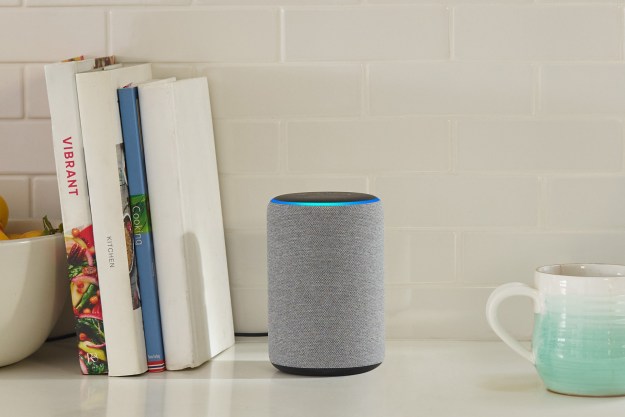Few things are as annoying as making a fresh cup of coffee in the morning and then forgetting about it after becoming immersed in your work. By the time you take a sip, it’s already cold. Smart mugs offer one solution to this problem by keeping your drink at a set temperature for a set amount of time, but is a smart mug worth the investment when an insulated bottle is just as effective?
The answer is no. An insulated bottle or travel container offers a host of advantages over smart mugs.
Smart mugs do look better
Most smart mugs are designed to look great sitting on your table or desk. The Glowstone Smart Mug is one example. Made out of fine bone china, it feels just like a standard coffee cup and comes in multiple color options to fit the style of your decor. It also has this neat feature where it base glows, simulating the look of it actually appearing hot. Best of all, it’s dishwasher safe — something a lot of travel bottles are not.

Most insulated containers are rather plain, especially those designed for travel. They won’t win any points for appearance, and you typically have to wash these by hand. If looks and appearance are your main concern, then a smart mug is the better choice.
Insulated bottles maintain heat better
The primary use of a smart mug is to keep your drink at a constant temperature. The Glowstone Smart Mug does so for one hour. The specs claim the temperature is maintained at 145 degrees, but our testing put it closer to 125. After the charge is used up, your drink will cool at the same rate it would in a normal cup.
An insulated bottle, on the other hand, keeps your drink hot (or cool) for longer. When I tested my insulated bottle, it lost roughly 10 degrees per hour. Starting with a cup of coffee at 150 degrees, it took about five hours before it was 102 degrees. While still perfectly drinkable, it’s not quite the ideal temperature.
The Glowstone Mug maintains heat for an hour, but takes between four and five hours to charge. Meanwhile, the insulated bottle requires no charge and maintained a steady temperature for significantly longer.
Insulated bottles are easier to take on the go
Depending on the brand and style of smart mug, it might be stuck to your desk. Some mugs need to be placed on a USB heating pad to maintain the temperature of your drink (although these can sometimes maintain it indefinitely). The Glowstone Smart Mug can be taken off the pad; in fact, taking it off the pad activates it. If you place it back on the charging pad, it turns off the heating element.

Insulated bottles are often designed to be used on the go. Take the Yeti brand, for example; these travel bottles can maintain the temperature of your drink for hours on end. They are less effective at maintaining heat than cold, but I’ve seen ice cubes in a Yeti after 10 hours.
Smart mugs tend to have handles — after all, it is a mug — while insulated travel bottles are meant to be held in your hand. A smart mug might be too hot to touch, requiring a handle, but an insulated bottle maintains the temperature of the drink so well that you can touch it and feel only a small bit of warmth. Thanks to their shape, insulated bottles fit much better inside a car’s cupholder. When you begin returning to the office, a travel bottle will be a better choice for keeping your drink warm on your morning commute.
Insulated bottles are less expensive
A 20-ounce insulated bottle might set you back $35, while a 12.5-oz smart mug can cost $150 or more. If you’re on a budget, an insulated bottle is a significantly better option. Insulated bottles also tend to hold more of a beverage on average.
I would much rather have two cups of coffee at a warm temperature for three hours than one cup for only one hour. But to be fair, if you’re a fast consumer of hot beverages, like your morning cup of joe, then smart mugs still have a practical purpose — especially if you’re at your desk a lot. At that rate, you don’t need a beverage to stay warm. Insulated bottles also can’t match the aesthetics of a traditional mug, which is why some people simply prefer mugs when drinking their warm beverages.
How hot is too hot?
Even if a smart mug can maintain a drink at 150 degrees for an hour, do you really need something that hot? For most people, 150 degrees is well above the comfortable drinking temperature.
To contradict this point entirely, many people suggest that 175 degrees is the ideal coffee temperature. Personally, I find 130 degrees to be about perfect.
The reason this is important is because some studies suggest that consuming two or more beverages above 149 degrees per day can increase the risk of esophageal cancer. While these studies are still underway and the results haven’t yet been confirmed, it’s something to consider.
Although smart mugs are amazing implementations of technology, insulated bottles still hold the upper hand in terms of temperature retention and practical application. All the testing suggests one possible improvement: insulated smart mugs. Adding insulation to a mug with a heating element would allow it to maintain an ideal temperature for longer, while using less power to keep the drink at that level. Combining the technology of both types of mugs would create the ideal coffee cup.
In the end, though, I have to ask: Who doesn’t drink their coffee in less than 15 minutes?
Editors' Recommendations
- This is how much it costs to run a smart garden, and how much it can save
- Renpho teams up with MyFitnessPal to make smart tracking that much easier
- Ups and downs of tech in 2021: A look back at the smart home
- Don’t sweat rising electric bills: Smart bed covers keep you cool and save money
- Nanoleaf Elements look like wooden smart light panels on your wall




